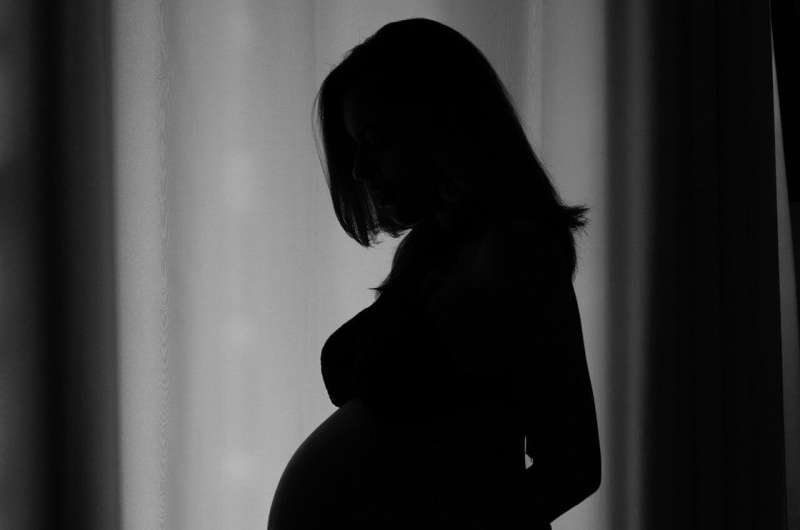
Researchers from the National Cancer Institute, Harvard Medical School, Boston Children’s Hospital, Technical University of Munich, and Beth Israel Deaconess Medical Center have found that 2,679 pregnancy-related deaths in the United States between 2018 and 2022 could have been avoided.
Their estimate reflects the number of deaths that may not have occurred if national rates had matched those of the state with the lowest pregnancy-related mortality.
The United States ranks highest among high-income countries for maternal mortality, creating a major public health concern. Reports from state-based Maternal Mortality Review Committees show that more than 80% of these deaths are preventable.
Rural counties experience rates 1.7 times higher than large metropolitan counties. Rates are two to three times higher in non-Hispanic Black and American Indian or Alaska Native populations compared with white populations.
Current tracking systems such as the National Vital Statistics System and the Pregnancy-Related Mortality Surveillance System often produce differing estimates, complicating efforts to monitor and address trends. A standardized, age-adjusted approach is necessary to measure mortality accurately and inform targeted interventions.
Until 2018, not all states had implemented the revised 2003 death certificate and coding method. Before full implementation, the National Vital Statistics System, Pregnancy-Related Mortality Surveillance System, and state Maternal Mortality Review Committees often reported inconsistent estimates.
Since implementation, rates still remain unstandardized by age and often exclude late maternal death, defined as occurring more than 42 days but less than one year after pregnancy. Given increasing maternal age and decreasing live births, detailed, age-standardized national estimates are needed to guide interventions.
In the study, “Pregnancy-Related Deaths in the US, 2018–2022,” published in JAMA Network Open, researchers performed a serial cross-sectional study that included 18,475,989 live births and 6,283 pregnancy-related deaths among women aged 15 to 54 years in the United States from 2018 to 2022.
Data sources included the Centers for Disease Control and Prevention’s Wide-Ranging Online Data for Epidemiologic Research, the Natality database, and the Multiple Cause of Death database.
Researchers calculated age-standardized annual and aggregated rates of pregnancy-related mortality per 100,000 live births. Rates were stratified by age group, race and ethnicity, and state. State-specific crude mortality rates and 95% confidence intervals were estimated.
Deaths were classified by cause, including hypertensive disorders, abortion, pregnancy-related complications, delivery or labor complications, and puerperium-related complications. Late maternal deaths were analyzed for contributing disease categories including cardiovascular disorders, cancer, endocrine disorders, mental and behavioral disorders, and drug- and alcohol-induced causes.
Researchers identified a total of 6,283 pregnancy-related deaths, including 1,891 late maternal deaths, from 2018 to 2022. The age-standardized rate increased by 27.7%, from 25.3 deaths per 100,000 live births in 2018 to 32.6 in 2022. Late maternal deaths increased from 7.3 to 11.1 deaths per 100,000 live births over the same period.
Rates varied more than threefold across states. Alabama had the highest crude rate at 59.7 deaths per 100,000 live births, followed by Mississippi at 58.2. California had the lowest rate at 18.5, followed by Minnesota at 19.1. If the national rate had matched the lowest state rate, 2,679 deaths would have been avoided.
Women aged 25 to 39 years experienced a 36.8% increase in pregnancy-related mortality. American Indian and Alaska Native women had the highest age-standardized rate at 106.3 deaths per 100,000 live births, followed by non-Hispanic Black women at 76.9. Non-Hispanic white women had a rate of 27.6. Latino or Hispanic women had a rate of 25.9, and non-Hispanic Asian women had the lowest at 21.8.
Cardiovascular disorders was the leading contributor to late maternal death, with an age-standardized rate of 4.7 deaths per 100,000 live births. Cancer was the second leading contributor at 2.0, followed by endocrine disorders at 1.6, drug- and alcohol-induced deaths at 1.1, and mental and behavioral disorders at 1.0. These last two causes accounted for 21.2% of late maternal deaths.
Researchers conclude that pregnancy-related death remains a critical public health issue in the United States, with wide disparities by race, ethnicity, and geography. Most deaths were preventable and often occurred beyond the immediate postpartum period. Understanding the causes and timing of these deaths is necessary to guide effective prevention strategies and reduce persistent inequities.
More information:
Yingxi Chen et al, Pregnancy-Related Deaths in the US, 2018-2022, JAMA Network Open (2025). DOI: 10.1001/jamanetworkopen.2025.4325
© 2025 Science X Network
Citation:
Preventable pregnancy deaths: 2,679 lives lost in US from 2018–2022, researchers estimate (2025, April 14)
retrieved 14 April 2025
from https://medicalxpress.com/news/2025-04-pregnancy-deaths-lost.html
This document is subject to copyright. Apart from any fair dealing for the purpose of private study or research, no
part may be reproduced without the written permission. The content is provided for information purposes only.


